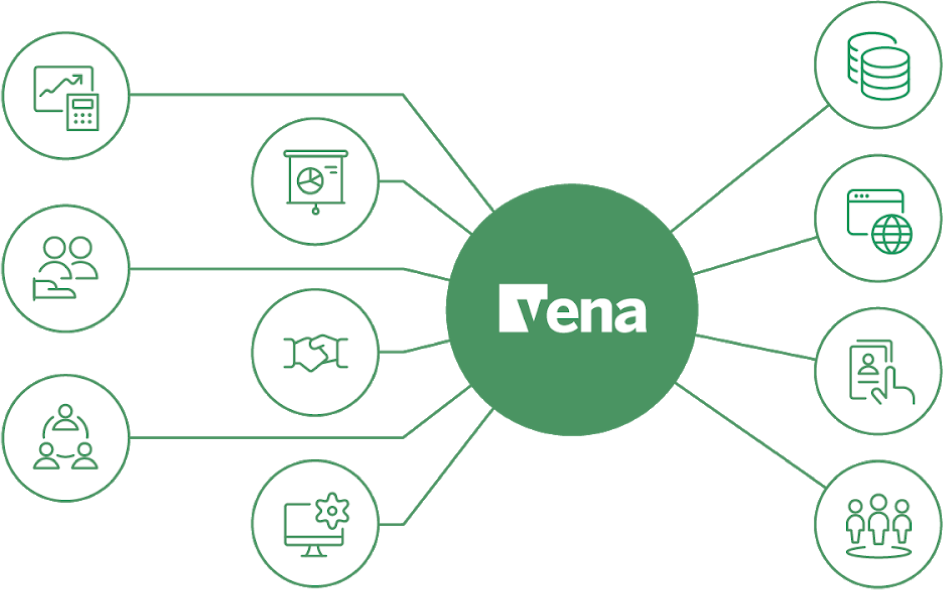

With Vena, I’m not spending my time reconciling spreadsheets, linking them all together and trying to get the consolidation to work. My time is much more value-adding: actually interrogating the assumptions, looking at the data, asking the right questions of the business and understanding the numbers a lot more.
.png)
Change was already underway at Thomas International when James Leisk joined as FP&A Manager in July 2019. In fact, it was one of the reasons he was brought on in the first place. A private equity firm had acquired the rapidly growing talent assessment platform provider just a year before and was hungry for the data, reporting and robust budgeting and planning that’s a natural part of the FP&A function. The problem was that until James had arrived, Thomas International didn’t actually have an FP&A function.
“My role was very much around coming in and building planning processes, building the reporting and the KPI analysis—all of the stuff that was needed operationally within the business by the management team,” James explains. “Our investors were also really eager to get their hands on this kind of information and insight from the business.”
At the time, the finance team was using disparate spreadsheets to execute and manage all of their budgeting and planning processes. James only had to experience one budgeting season to realize the system was problematic.
“It was quite an eye opener for me, seeing the struggle of having to link all of these spreadsheets together and the headache of version control—you’re sending out templates to people, they're sending it back and you're working off Version 9, but they're still looking at Version 7,” James says. “It was really going through that pain that exposed where our weaknesses were and helped support all of the things we were looking to do going forward.”
The process wasn’t just slow and cumbersome, he realized, but there wasn’t a regular forecasting cadence, accountability was lacking and they had limited collaborative capabilities. So while the finance team was building budgets and creating targets across departments, there was no way to rationalize the numbers and invite every team into the process—making cross-team buy-in difficult to achieve. All of which created a disconnect between Thomas International’s’ finance, sales, customer success and leadership teams.
If he wanted to introduce more sophisticated processes, James realized, he’d need to find a more sophisticated solution to support them.
.png)
James knew he had his job cut out for him if he wanted to get Thomas International out of the spreadsheet slump and build a better FP&A foundation. His team needed to improve accountability and ownership over the numbers and make forecasting a continuous part of their finance function. But the company was also going through changes on a larger level—they needed a solution that would be flexible to those evolving needs as well.
“One of the reasons I liked Vena was that, in my experience, everyone within the finance community always reverts back to using Excel when any kind of change happens. You might build some nice templates, but then a year later you need to plan your revenue a bit differently, and it’s too difficult to do, so the team shifts back to Excel,” James says. “And Thomas was already changing—we were in the process of moving away from pay-as-you-go to a subscription-based model—so I knew I really needed something agile.”
Vena checked all of the boxes. It promised to give users an intuitive and familiar native Excel interface to work with while allowing them to continue employing some of their existing templates—all while expanding their FP&A processes with new best practices too. Through Vena, James has implemented regular quarterly forecasting, eradicated their version control problem and improved accountability overall.
“Everyone inputs their budget into the template, then it's just about constantly revisiting those assumptions,” James says. “They don’t need to look at a new template or familiarize themselves with anything new, they just need to revisit the numbers they put in last time. That's made running a forecasting process much easier, as it just means revisiting the last iteration rather than having to start again.”
And Vena hasn’t just helped them with their core financial processes—it’s empowered cross-departmental collaboration as well. Whereas before, teams were given budgets and targets, but didn’t get to see a lot of context into those numbers—making buy-in difficult to achieve—they can now access that information themselves whenever they need it. “They know where the reports are. They just go in, open it up, choose the relevant department and they're off and running,” James says. “That's definitely helped to build bridges and create more of a dialogue on what's actually happening in the business.”
.png)
After building up their FP&A processes and completing another budgeting season at Thomas—this time with Vena in place—James has already noticed the new efficiencies and benefits they’ve achieved.
“With Vena, I’m not spending my time reconciling spreadsheets, linking them all together and trying to get the consolidation to work,” he says. “My time is much more value-adding: actually interrogating the assumptions, looking at the data, asking the right questions of the business and understanding the numbers a lot more, as opposed to just checking that all the controls are in place.”
They’ve been able to introduce new KPIs—from the number of new customers and average customer spend, to cash flow and revenue metrics—and achieve stronger data-driven insights from across the business. They’ve also been able to support the company in its overall goals, becoming a true strategic partner within the organization. As the company puts more of a focus on its marketing efforts, for instance, Vena has allowed them to track key marketing metrics such as lead conversions, cost of acquisition and lifetime value. “We're also tracking how our customers are engaging with our platform, which is a really good lead indicator for us of future sales,” James adds. “It lets us identify upsell opportunities.”
As Thomas continues to use Vena to build their FP&A processes, James plans to increase collaboration further by adding new reporting capabilities and to better look ahead through scenario planning. He also expects to save time in future budgeting cycles thanks to the new efficiencies they have in place—all while providing a better flow of information to their investors, individual departments and organization as a whole.
Over 1,300 leading companies grow with Vena. Start your journey today